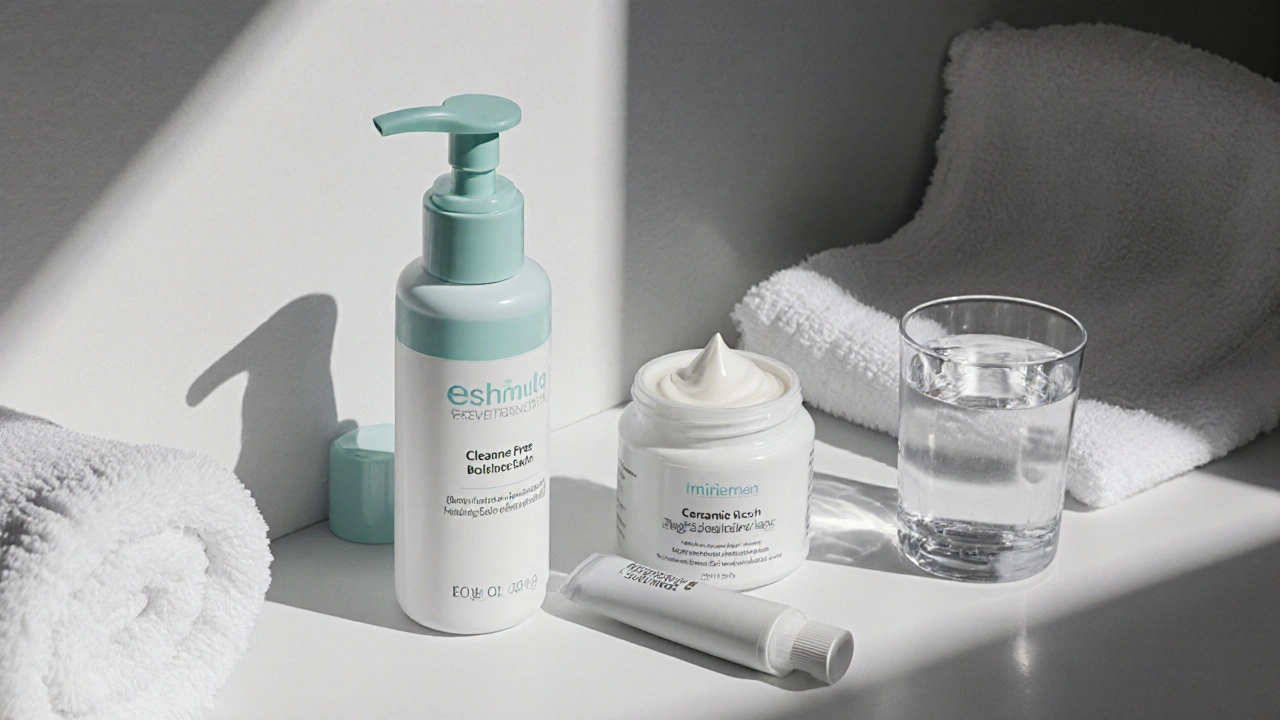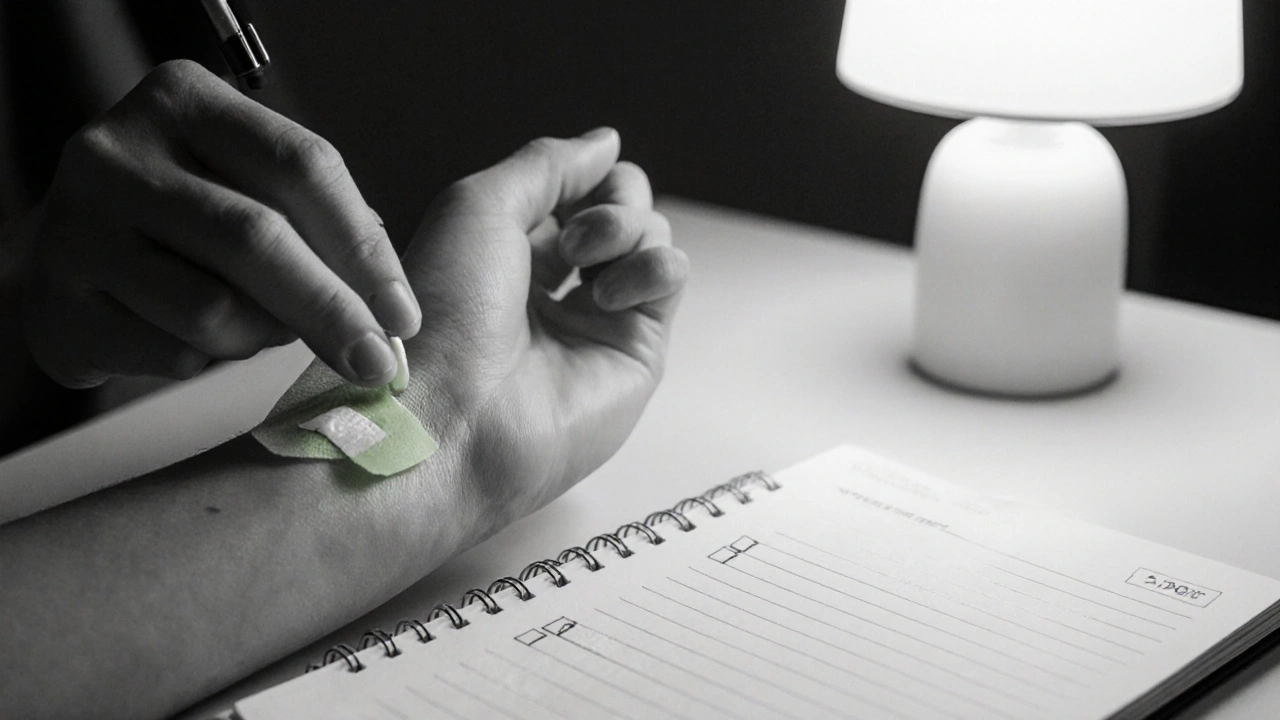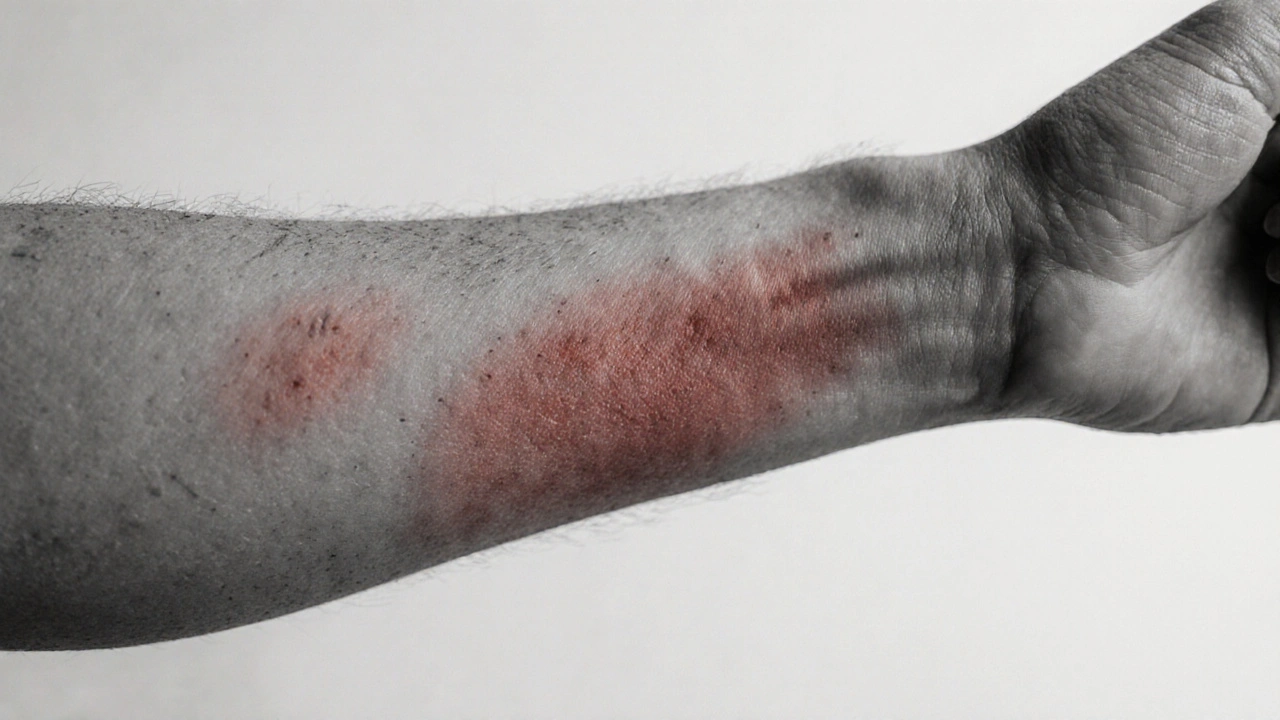Contact Dermatitis Ingredient Checker
Check Your Product Ingredients
Enter ingredients from your skincare product. This tool will help you identify safe options for contact dermatitis-prone skin.
Important: Always patch test new products for 24 hours before full use. This tool doesn't replace professional medical advice.
Living with contact dermatitis can feel like walking a minefield-one wrong product and your skin erupts. The good news? You can design a simple, skin‑friendly routine that keeps irritants at bay and lets your skin heal. Below is a step‑by‑step guide that explains exactly what to use, how to layer products, and which pitfalls to skip.
What Is Contact Dermatitis?
Contact dermatitis is a skin inflammation that occurs when an irritant or allergen touches the skin surface. It manifests as redness, itching, swelling, and sometimes blisters. Unlike atopic dermatitis, which is driven by internal immune factors, contact dermatitis is triggered by external substances such as soaps, metals, fragrances, or even certain fabrics.
The key to managing it lies in protecting the skin barrier and avoiding known triggers. Understanding the condition sets the foundation for a routine that actually works.
Core Principles of a Safe Skincare Routine
- Minimise exposure to potential irritants.
- Use gentle cleansers with neutral pH (around 5.5) to avoid stripping natural oils.
- Apply a barrier‑repair moisturizer that contains ceramides, hyaluronic acid, or petrolatum to lock in moisture.
- Prefer physical sunscreen (zinc oxide or titanium dioxide) over chemical filters that can be sensitising.
- Conduct a patch test before introducing any new product.
Step‑by‑Step Routine
1. Cleanse - Keep It Simple
Choose a fragrance‑free, sulfate‑free cleanser that respects the skin’s natural pH. Look for terms like “pH‑balanced”, “non‑comedogenic”, and “hypoallergenic”. A good example is a mild, aqueous cleanser containing glycerin and panthenol. Apply with lukewarm water, massage briefly, then rinse gently. Avoid scrubbing-your skin’s barrier is already compromised.
2. Moisturise - Seal the Deal
Immediately after pat‑drying (while the skin is still damp), slather a barrier‑repair moisturizer. Two popular options are:
| Attribute | Ceramide Moisturizer | Petrolatum (Petroleum Jelly) |
|---|---|---|
| Primary function | Restore lipid layers | Occlusive barrier |
| Feel | Light‑to‑medium, non‑greasy | Heavy, greasy |
| Potential irritants | Low (fragrance‑free) | Very low |
| Best for | Daytime, under makeup | Nighttime or extremely dry patches |
If you prefer a lighter texture for daytime, pick a ceramide‑rich cream. For night or for areas that crack (hands, feet), petrolatum offers a lock‑in effect.
3. Sun Protection - Choose Safely
Even if you stay indoors, UVA can penetrate windows. Opt for a mineral sunscreen with at least 15% zinc oxide. Apply a pea‑sized amount to the face and a thin layer to any exposed arms. Reapply every two hours if outdoors.
4. Extras - Keep Them Minimal
- Anti‑inflammatory serums (e.g., 2% niacinamide) can calm redness, but test first.
- Avoid retinoids, alpha‑hydroxy acids, and essential oils unless prescribed.
- Use fragrance‑free laundry detergent and avoid fabric softeners that leave residues.

Ingredient Cheat Sheet
Below is a quick reference of ingredients to look for and those to steer clear of.
- Look for: Ceramides, hyaluronic acid, glycerin, panthenol, zinc oxide, titanium dioxide, dimethicone (non‑sensitising silicone), oat extract.
- Avoid: Fragrance, essential oils, parabens, sulfates (SLS, SLES), formaldehyde releasers, benzoic acid, propylene glycol, lanolin (for some).
Patch‑Testing: Your Safety Net
Before committing to a new product, perform a simple patch test:
- Choose a small, discreet area (inner forearm or behind the ear).
- Apply a pea‑size amount of the product.
- Cover with a hypoallergenic bandage.
- Leave for 24hours. If no redness, itching, or swelling appears, the product is likely safe.
- If a reaction occurs, discontinue use and note the ingredient for future avoidance.
This practice cuts down surprise flare‑ups dramatically.

When to Call a Dermatologist
If you notice any of the following, book an appointment:
- Persistent swelling or pain beyond two weeks.
- Blistering that bursts and forms crust.
- Signs of infection - pus, increasing warmth, or foul odor.
- Unclear trigger despite patch testing.
A dermatologist can perform specialized testing (e.g., patch series) and prescribe prescription‑strength barrier creams or topical steroids if needed.
Quick Routine Checklist
- Use a pH‑balanced, fragrance‑free cleanser.
- Apply moisturizer within 3minutes of cleansing while skin is damp.
- Choose a mineral sunscreen (≥15% zinc oxide) for daytime.
- Patch test every new product 24hours before full use.
- Keep laundry detergent and fabric softener fragrance‑free.
- Track flare‑ups in a simple journal to spot patterns.
Frequently Asked Questions
Can I use a regular facial moisturizer?
Most standard moisturizers contain fragrance or preservatives that can trigger contact dermatitis. Opt for a fragrance‑free, ceramide‑rich formula instead. If you must use a regular product, do a patch test first.
Is it safe to use makeup on irritated skin?
Only if the makeup is labeled non‑comedogenic, fragrance‑free, and mineral‑based. Mineral foundations with zinc oxide or titanium dioxide are generally well‑tolerated. Avoid liquid foundations with alcohol or fragrance.
Do natural or organic products reduce the risk?
Not necessarily. “Natural” often means essential oils or botanical extracts, which can be potent allergens. Focus on the ingredient list, not the marketing claim.
How often should I moisturise?
At least twice daily - once after cleansing in the morning and once before bed. Reapply after hand‑washing or if skin feels tight.
Can diet affect contact dermatitis?
While diet isn’t a direct cause, certain foods can exacerbate inflammation. Keeping a balanced diet rich in omega‑3 fatty acids may support overall skin health.


Anna Cappelletti
Thanks for laying out such a clear roadmap for dealing with contact dermatitis.
One thing I love is the emphasis on pH‑balanced cleansers, because many people overlook that tiny detail.
In my own experience, switching to a glycerin‑based wash cut my itching in half within a week.
The guide’s suggestion to apply moisturizer while the skin is still damp is spot on – the skin can lock in water like a sponge.
I also appreciate the note about ceramide versus petrolatum; each has its niche depending on the time of day.
For daytime, I stick to a light ceramide cream that doesn’t feel greasy under makeup.
At night, I layer a thin film of petroleum jelly on the hands and feet to keep cracks at bay.
The patch‑testing protocol is simple enough for anyone to follow at home, which demystifies a lot of fear.
Just remember to use a hypoallergenic bandage that breathes, because a tight band can itself become an irritant.
Another tip: keep a small notebook by the sink to jot down any new product and the result after 24 hours.
Over time you’ll start to see patterns that point to hidden culprits in household items.
The sunscreen recommendation of at least 15 % zinc oxide is a good baseline; higher percentages are fine if you tolerate them.
I’ve tried mineral sunscreens with titanium dioxide and found them less likely to cause flare‑ups than chemical filters.
If you’re ever unsure about an ingredient, a quick look‑up on the Environmental Working Group’s skin deep database can be reassuring.
And don’t forget to swap out your laundry detergent for a fragrance‑free version – that alone can reduce nighttime itching dramatically.
Keep experimenting cautiously, and your skin will thank you with fewer red patches and more confidence.